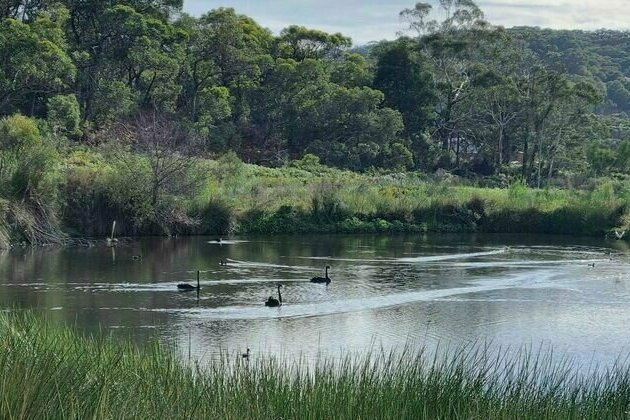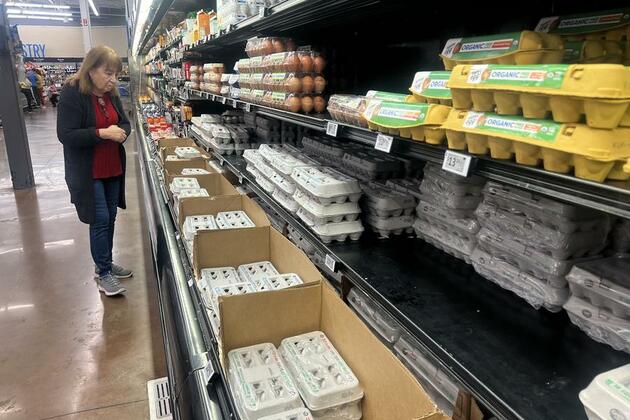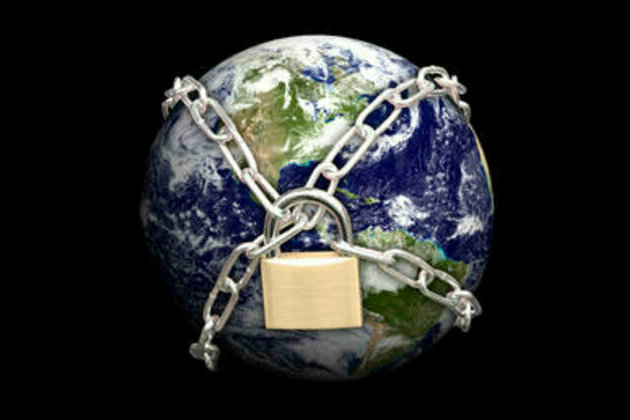Surviving swamps on South Australia's parched Fleurieu Peninsula are a lifeline to wildlife - and farmers
The Conversation
19 May 2025, 20:19 GMT+10

South Australia is famously the driest state on the driest inhabited continent.
But even for South Australia, the current drought is extreme. Rainfall has been the lowest on record across large areas.
When drought strikes and water sources dry up, life becomes hard for wildlife. In these conditions, perennial water sources become enormously valuable.
Dotted across the drought-stricken Fleurieu Peninsula south of Adelaide are more than 850 swampy wetlands. When the landscape dries out, these swamps act as refuges. Animals, birds, insects and reptiles come from far and wide, drawn by permanent spring-fed water, good habitat, diverse plant species and cooler, more humid micro-climates. These swamps are vital habitat for the critically endangered Mount Lofty Ranges southern emu-wren.
Drainage channels were cut through many of these swamps in the early days of settlement, in an effort to turn them into pasture. The Fleurieu swamps are now considered an endangered ecological community. More than 90% of the remaining swamps are located on private property.
Keeping these swamps intact and restoring dried out wetlands comes with real benefits for farmers. Birds and insects seek refuge in the swamps, but feed on pest species on nearby farmland.
As drought tightens its grip on South Australia, these swamps will only become more important to wildlife. Restoring these swamps by bringing back the water and restoring plants and pollinators could go some way to help.
The swamps of the Fleurieu are some of the most diverse and productive habitats on Earth. Many species of plants, birds, frogs, fish, insects, mammals and reptiles rely on them to survive.
Before colonisation, swamps and wetlands covered large areas of the Fleurieu Peninsula. Three First Nations language groups lived in these areas on the central and eastern peninsula. The importance of these wetlands is recorded in the shared story of Tjilbruki, a Kaurna ancestor whose tears at the death of his nephew gave rise to six freshwater springs.
Over the last 200 years, most of this region has been cleared for pasture, crops and vineyards. Only 4% of the swamps are conserved. They are now listed as a critically endangered ecological community. These swamps are still declining due to threats such as more human settlement, land clearance, water extraction and invasive species such as blackberries.
Many were drained to make way for agriculture. We don't fully know how many remain, as many are not well captured in current maps.
But we know these wetlands are vital, not just for nature but for farmers too. Farmers would miss them if they were gone.
We can see this most clearly during droughts. As the land gets drier and ephemeral water sources evaporate, ibises, eastern great egrets, white-faced herons and masked lapwings move into these swamps, seeking water. During the days, though, they spread out and feed on pasture pests such as grasshoppers and cockchafer beetle grubs.
Similarly, these wetlands act as a haven for important insect pollinators and predators. Hoverflies and native bees help farmers by pollinating pasture legumes such as clover, while predators keep down the numbers of pest species.
As adults, parasitic wasps rely on the nectar from swamp plants such as woolly teatree. But they lay their eggs on common pasture pests such as caterpillars and grubs. When their larvae hatch, they eat these pests. Carnivorous insects such as ladybirds and assassin bugs eat other insects which can trouble farmers.
Swamps don't have a great reputation. Throughout human history, they have been seen as sources of foul air and a haven for insects and disease. A common response was to dig channels to drain them.
We now know much more about how important swamps and other wetlands for the natural world - and for humans. Wetlands naturally store water and carbon, tame floods and offer refuges during drought. Correcting these historic mistakes will take time.
Peatlands like these store huge volumes of carbon in their waterlogged soils. Our research estimated the carbon storage of a peat swamp at Yundi at more than 2,500 tonnes of carbon dioxide equivalent per hectare. The depth of carbon-rich organic peat was up to three metres in places. By contrast, a healthy woodland stores around 650 tonnes per hectare.
This natural carbon sink will remain as long as the peat remains moist and annual increments from plant growth and decay add to the stock.
When an agricultural drain is cut through a swamp, water gradually leaches out of the peat profile. Over time, enough water leaves to dry out the peat, beginning with the surface layer. This means long-stored carbon and methane can be released back to the atmosphere.
Conserving remaining peatlands and restoring those already drained is essential if the climate goals of the Paris Agreement are to be achieved, according to the Food and Agriculture Organization.
On the Fleurieu Peninsula, there's huge potential to return water to the soils and expand these once-thriving wetlands.
The good news? Community groups and farmers have already embarked on several restoration projects. Around 50 farmers in the region have formed the Fleurieu Swamp Restoration Network. To date, in cooperation with Yundi Nature Conservancy, 25 swamp restoration plans have been developed and 15 are under way. If successful, these will restore more than 100 hectares of swamp.
 Share
Share
 Tweet
Tweet
 Share
Share
 Flip
Flip
 Email
Email
Watch latest videos
Subscribe and Follow
Get a daily dose of Perth Herald news through our daily email, its complimentary and keeps you fully up to date with world and business news as well.
News RELEASES
Publish news of your business, community or sports group, personnel appointments, major event and more by submitting a news release to Perth Herald.
More InformationInternational Business
SectionBoeing clinches record jet deal with Qatar Airways during Trump visit
DOHA, Qatar: Boeing secured its largest widebody aircraft deal this week, as Qatar Airways placed firm orders for 160 jets with options...
EU slashes growth forecasts over higher U.S. tariffs, uncertainty
The Commission has cut its predictions for real GDP growth across the 27-country bloc to 1.1 percent in 2025 and 1.5 percent in 2026....
Are US-Israel special relations about to end
Donald Trumps Middle East tour conspicuously excluded the Jewish state, potentially signaling the start of a new foreign policy paradigm...
Economic Watch: Economists warn recession risks for U.S. economy
Economists have warned of recession risks for the U.S. economy amid rising government debts, a dim growth prospect and weak consumer...
Starve the people, miss the point: The cruel logic of sanctions
Often applied by the West as a tool to force countries into political changes, sanctions fail to achieve their objectives ...
Column: Tianjin: Crafting a new chapter for SCO by Haihe River
As the 2025 SCO summit is approaching, Tianjin stands ready to facilitate new SCO chapters in building a community with a shared future....
Australia
SectionSweden backs EU entry into Pacific trade bloc
STOCKHOLM, Sweden: Sweden plans to propose that the European Union join the Pacific Rim trading bloc, the CPTPP, aiming to create the...
Virat's fitness doesn't indicate that this was time, Rohit should have played: Joginder Sharma on Test stalwarts' retirement
By Vivek Prabhakar Singh Diu (Daman and Diu) [India], May 20 (ANI): Former India cricketer and 2007 T20 World Cup hero Joginder...
IPL 2025: Marsh, Markram's blitzkrieg, Pooran's effort powers LSG to 205/7 against SRH
Lucknow (Uttar Pradesh) [India], May 19 (ANI): Mitchell Marsh and Aiden Markram's blitzkrieg, along with Nicholas Pooran's finishing...
Surviving swamps on South Australia's parched Fleurieu Peninsula are a lifeline to wildlife - and farmers
South Australia is famously the driest state on the driest inhabited continent. But even for South Australia, the current drought...
'No pain, no gain': why some primary students are following intense study routines
Every year, thousands of New South Wales students sit a test to determine places for highly sought-after selective high schools. These...
"Super proud": Preity expresses happiness as her team Punjab Kings qualify for IPL playoffs
New Delhi [India], May 19 (ANI): Actor Preity Zinta, a co-owner of the Punjab Kings team has penned an appreciation post for the squad,...












